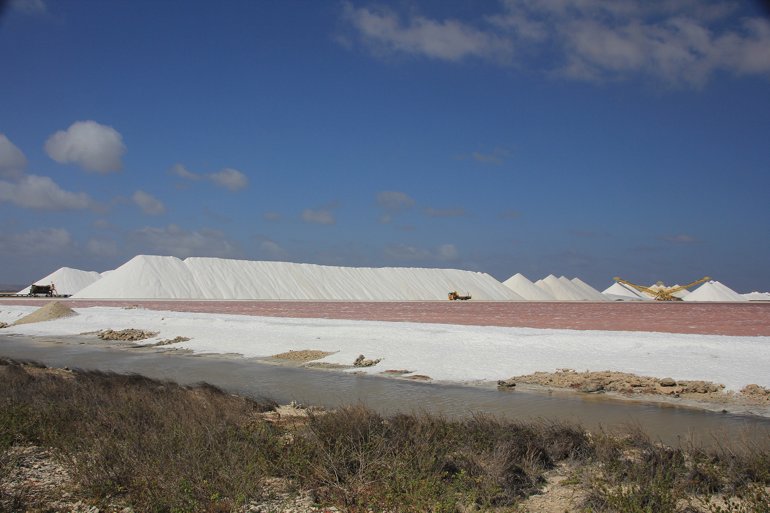Bonaire

This week has been a very memorable one, Pannikin arrived following their haul out in Trinidad and took up residence in front of us, and I passed my PADI Dive Open Water certificate. I was very lucky to have one to one tuition (believe me, I needed it!) at Carib Inn just south of the town, and after training in the pool and then off the beach I had four reef dives, one off the beach also and for the other three I joined their dive boat and visited some great sites further north and off the small island, Klein Bonaire. We spotted five turtles on the second dive, two of which came right past my goggles very slowly so I had the most amazing view, and on the third we spotted an enormous green moray eel, its head as big as mine so we reckon its body, hidden in its rocky hole, would have been 5ft! It certainly was a relief to pass and be able to dive with Jez, and after kitting myself out we have been on several dives since, including a night dive last night off the boat. We were hoping to see ‘ostrocods’ (a very small crustacean the size of a tomato seed) lighting up like fairy lights just after sun down, but they either didn’t appear or we were a day late as it only happens once a month. Nevertheless, it was an amazing experience diving at night and we had a couple of good sightings of moray eels out hunting and unfortunately dozens of moon jelly fish which we did our best to avoid. There were so many at one point it was difficult dodging out of their way in the dark. Here on Bonaire there are 63 official dive sites, with a further 26 around Klein Bonaire, all named with a mooring buoy attached so we can take the dinghy and tie up or better still we have taken Pannikin (as Joy is too big for the mooring) so we really are spoilt for choice. We have also had a day touring the island with Steve and Ange, they are here only for a fortnight before heading off towards Panama to get ready for their canal transit in December. This is the last time we will see them until we make it to Australia as they are returning home next year, and we won’t go through the canal until early 2016. So we are spending lots of time together before our farewell dinner a week from now. Before visiting the donkey sanctuary, we had a drive around the island and first headed north to the national park. The coast road to the north is quite narrow and there are large areas completely uninhabited. The huge Gotomeer lake close to the park is beautiful and has lots of wading birds and, of course, flamingos.
The easterly wind has been blowing 25 knots all week across the island, and so the east coast was particularly rough looking out to sea, the coast is rugged and wild with a few little deserted bays which would be impossible to get into with the sea crashing into the entrance. There is a network of unmade roads venturing off the one main road that circles the island, and we discovered a blow hole after a ten minute drive across a sandy dirt track where only the goats dared to venture.
The south of the island is my favourite, the piles of salt provide a dramatic back drop to the glimmering pink salt lakes. Apparently 2,000 tonnes of salt can be loaded per hour along a conveyor belt system across the pier to waiting ships.
Further along the coast there are the slave huts, one pink set and one white set. Each hut housed four adult slaves working on the salt lakes, they ate, slept and kept their belongings in here, a space not even big enough for four people to lay down. At the weekend, the slaves were ‘allowed’ to walk to the northern village of Rincon to visit their families, a 40 mile round trip.
|














